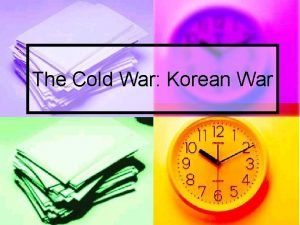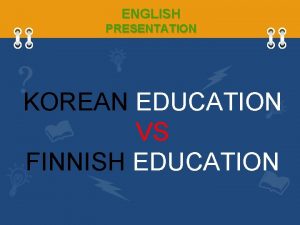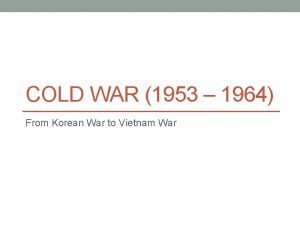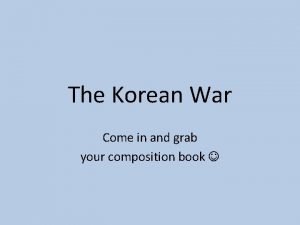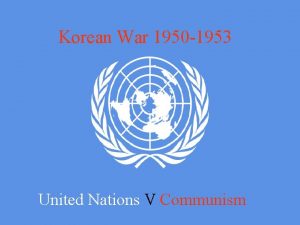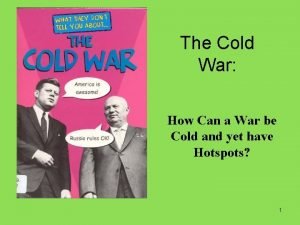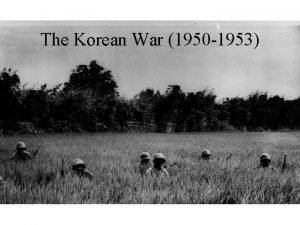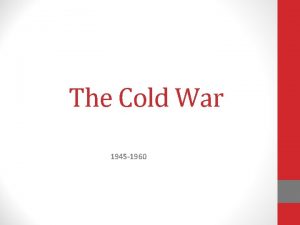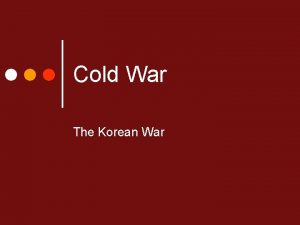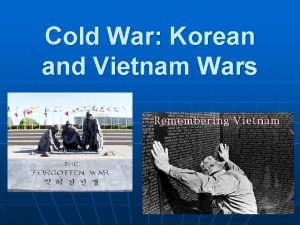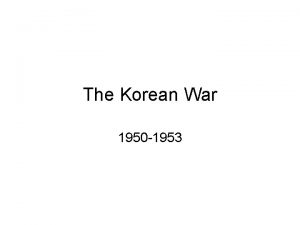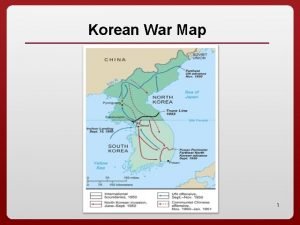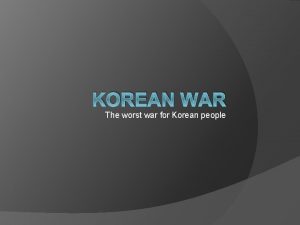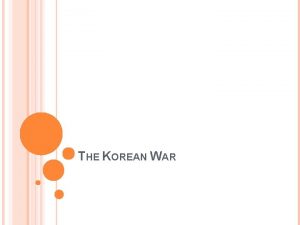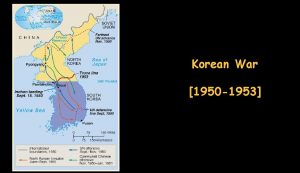The Korean War The Korean War n At










- Slides: 10

The Korean War

The Korean War n At the end of WWII US and Soviet forces entered Korea to disarm the Japanese troops stationed there n Korea was divided at the 38 th parallel line of latitude – The Soviet Union controlled the North § North Korea had a communist govt. – The US controlled the South § South Korea had an American-backed govt. – Both govt. claimed authority over all of Korea

Korean War: US Intervenes n June 25, 1950 – N. Korean troops invaded S. Korea – North Korea was supplied by the Soviet Union (tanks, planes, money, etc. ) – They quickly drove back the poorly equipped S. Korean forces n Truman saw the invasion of S. Korea as a test to America’s containment policy – Truman ordered the US navy and airpower to help defend South Korea – The UN also joined in defense of South Korea n The US and UN troops fought the N. Koreans back across the 38 th parallel and beyond all the way to the border w/ China

Korean War: China Enters n The Chinese saw the advancing UN troops as a threat and warned the forces to stop – UN troops ignored the warning China launched a massive attack across the border driving the UN forces back across the 38 th parallel n Mac. Arthur then demanded approval to expand the war against China, he asked for… n – A blockade against Chinese ports – The use of Chiang Kai-shek’s Nationalist forces – Bombing of Chinese cities w/ atomic weapons

Korean War: Mac. Arthur is Fired n Truman refuses Mac. Arthur’s demands b/c he did not want to expand the war into China or to use atomic bombs – Truman remained committed to limited war § Containing Communism is our foreign policy n Mac. Arthur publicly criticized the president – Truman fires Mac. Arthur for insubordination – Truman chose General Matthew Ridgway to replace Mac. Arthur

The Korean War: Cools down n By mid 1951, UN forces had pushed the Chinese and N. Korean forces back across the 38 th parallel – The war settled into a series of small battles n November began 1951 – peace negotiations – An armistice would not be signed until July 1953

Armistice Finally Signed n 1953 Eisenhower becomes president – He was committed to ending the costly and unpopular war in Korea – Ike let the Chinese know that the US might continue the war “under circumstances of our own choosing” § A hint at nuclear attack § Ike’s use of brinkmanship!!!

Brinkmanship n Brinkmanship – willing to go to the brink of war to get your enemy to back down – Used by President Eisenhower, Kennedy, and Johnson n Success of brinkmanship relied on… – Ones willingness to go to war – Better weapons than the opposing side § Led to a an arms race

Korean War: The Ending n July 1953 – negotiators sign an armistice – The battle line b/w the two sides b/c the border b/w N. and S. Korea § Very near the prewar boundary – A demilitarized zone separates N. and S. Korea n The war had stopped the spread of communism in Korea § The goal of containment is reached!!!

The Korean War: Effects n The Korean war… – 1 st time the US went to war to contain communism – After the Korean war the US b/g to buildup the military – Expanded the Cold War to Asia – American aid b/g to flow to the French forces fighting Communist guerillas in Vietnam


